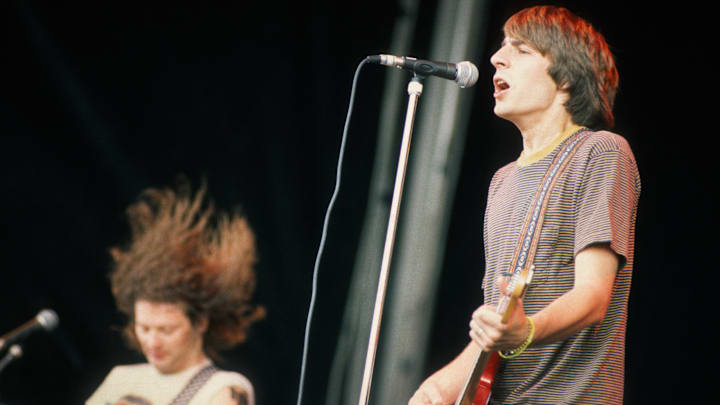1987
The Legacy by Testament
They were originally called Legacy. By the time they recorded their debut album, three-fifths of the original band had been replaced and there was a new name. They used the original name for their album title. The key new addition was lead guitarist Alex Skolnick, who had just turned 19 when they recorded The Legacy. Skolnick, along with guitarist Eric Peterson, and the rhythm section of Greg Christian and Louie Clemente, establish a headlong assault from the opening seconds of the opening track, “Over the Wall.” When vocalist Chuck Billy begins his aggressive wailing, Testament is on firm metal footing.
Then Skolnick begins the first of many lightning-fast solos that would come to define Testament and most of the thrash metal that would follow. Later, on “Burnt Offering,” Skolnick shows off his slower melodic ability, before shifting back into overdrive. That will be the pattern throughout The Legacy. They are fast and loud but can slow the pace in brief snippets to add texture. They are martial but melodic. Billy can screech, but he can also sing. And Skolnick can play pretty much anything with six strings.
Testament was a major force in the burgeoning Bay Area metal scene. Older metal fans certainly have not forgotten them, but they never got the attention of Metallica or Megadeath. 1987 was a crucial year for metal, as artists from across the globe – including Voivod and King Diamond – released innovative albums that pushed its boundaries. Testament was among the most important.
You’re Living All Over Me by Dinosaur Jr.
Meanwhile, across the country in western Massachusetts, a couple of friends named Joseph Mascis and Lou Barlow were building their band. They liked hard rock and Mascis especially was a fan of Neil Young. As Barlow would later explain, “We loved speed metal – and we loved wimpy-jangly stuff.” They recorded a debut album on the cheap. Then, after capturing the attention of guitar gods Sonic Youth, they did a more professional job on their sophomore effort, You’re Living All Over Me, for SST.
Mascis, now going by the name J Mascis, combined a Neil Young voice and sense of melody with a louder and faster guitar. His uncompromising vision led to continual conflicts within the band. Drummer Patrick Murphy – AKA Murph – has spoken openly about wanting to beat Mascis to a pulp on multiple occasions. Barlow, once an equal, took on a subservient role as bass player. Both eventually left the band – or were fired.
But on that first proper album, regardless of whatever tension existed, the music was overwhelming. Mascis’ songs have unstoppable momentum but enough of that “wimpy-jangly stuff” to separate from speed metal. “Little Fury Things” and “In a Jar” show off that combination perfectly.
Then, after eight tracks, Barlow gets the two final songs and moves the band in a very different direction – planting the seeds for the lo-fi revolution he would help launch with his band Sebadoh, after being exiled by Mascis. After a few decades of acrimony, the original trio reunited in 2005 and have been playing together ever since.
Fast Folk Musical Magazine (Vol. 4, No. 3) by Fast Folk Musical Magazine
Fast Folk was a loose collective of singer-songwriters that sprung up more or less organically in Greenwich Village in the 1970s. By the early ‘80s, it had developed into a major player in the independent folk scene, staging concerts and putting out recordings of large groups of artists who wouldn’t otherwise have the wherewithal to get albums into the public.
Suzanne Vega worked for the magazine component of Fast Folk before performing. Lyle Lovett performed on a Fast Folk album in 1985 before his self-titled debut came out a year later. The project journeyed to Boston in 1986 to record Tracy Chapman two years before she released her first album.
The 1987 album mentioned above doesn’t have big names – John Leventhal, who accompanies Deborah Snow on one of the tracks – may be the biggest. But if you like American folk music, many of the Fast Folk albums are gems. Vol. 4, No. 3, recorded at the Hoot, is a lovely example of the entire collection.
There’s the bluesy protest of David Indian's tune “Song for Rachel Scheranski,” David Ray’s snappy contemplation on coming to New York's “Bright Lights,” and Death and Taxes’ riotous “Growing Closer to You,” about the joys and pitfalls of homogenization. Hearing artists like Richard Julian, who performs “In the Left Wing,” makes you wonder what keeps some extremely talented singer-songwriters from achieving mainstream success.
Continued on next slide...
